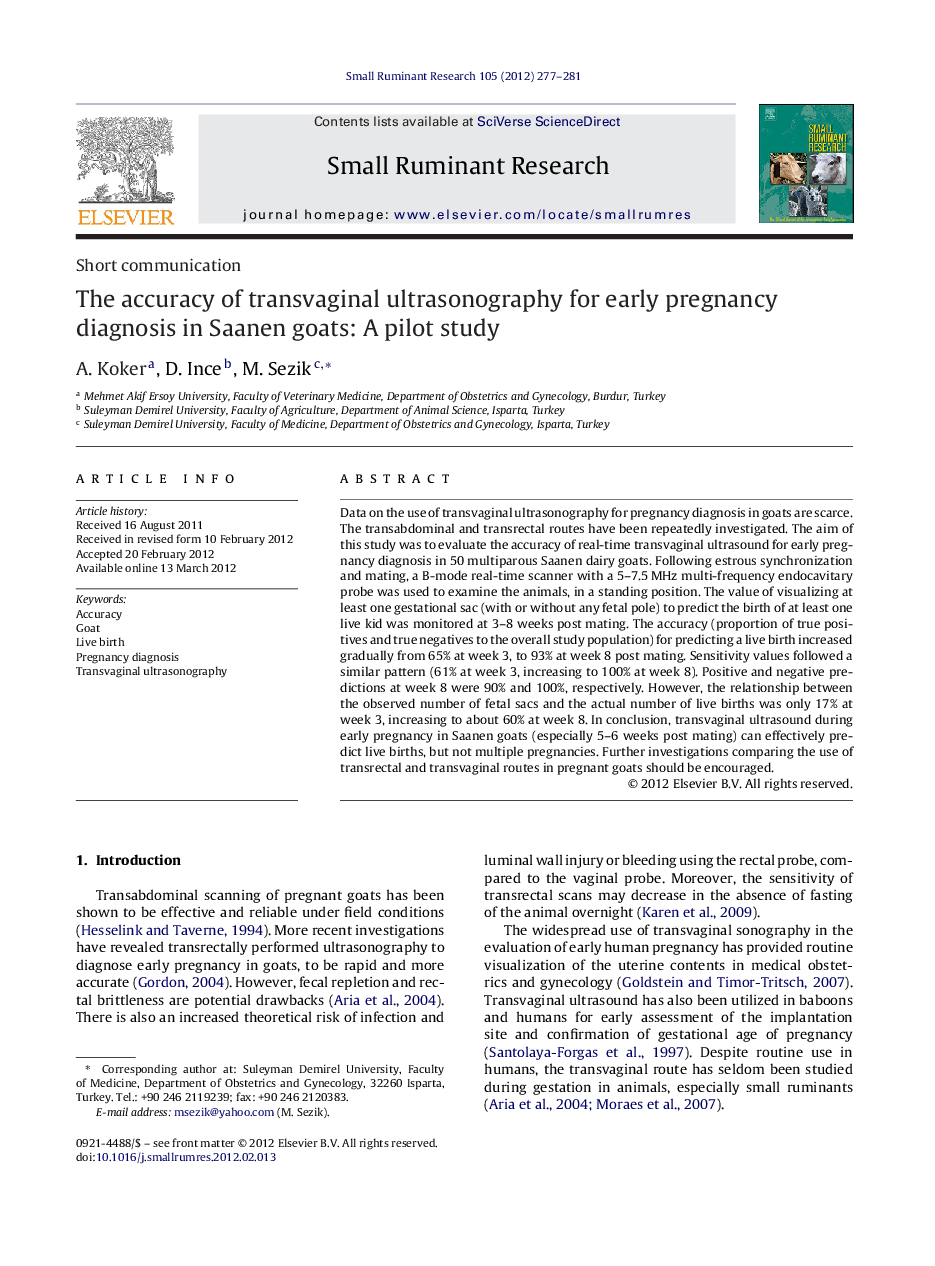| Article ID | Journal | Published Year | Pages | File Type |
|---|---|---|---|---|
| 5796174 | Small Ruminant Research | 2012 | 5 Pages |
Data on the use of transvaginal ultrasonography for pregnancy diagnosis in goats are scarce. The transabdominal and transrectal routes have been repeatedly investigated. The aim of this study was to evaluate the accuracy of real-time transvaginal ultrasound for early pregnancy diagnosis in 50 multiparous Saanen dairy goats. Following estrous synchronization and mating, a B-mode real-time scanner with a 5-7.5Â MHz multi-frequency endocavitary probe was used to examine the animals, in a standing position. The value of visualizing at least one gestational sac (with or without any fetal pole) to predict the birth of at least one live kid was monitored at 3-8 weeks post mating. The accuracy (proportion of true positives and true negatives to the overall study population) for predicting a live birth increased gradually from 65% at week 3, to 93% at week 8 post mating. Sensitivity values followed a similar pattern (61% at week 3, increasing to 100% at week 8). Positive and negative predictions at week 8 were 90% and 100%, respectively. However, the relationship between the observed number of fetal sacs and the actual number of live births was only 17% at week 3, increasing to about 60% at week 8. In conclusion, transvaginal ultrasound during early pregnancy in Saanen goats (especially 5-6 weeks post mating) can effectively predict live births, but not multiple pregnancies. Further investigations comparing the use of transrectal and transvaginal routes in pregnant goats should be encouraged.
